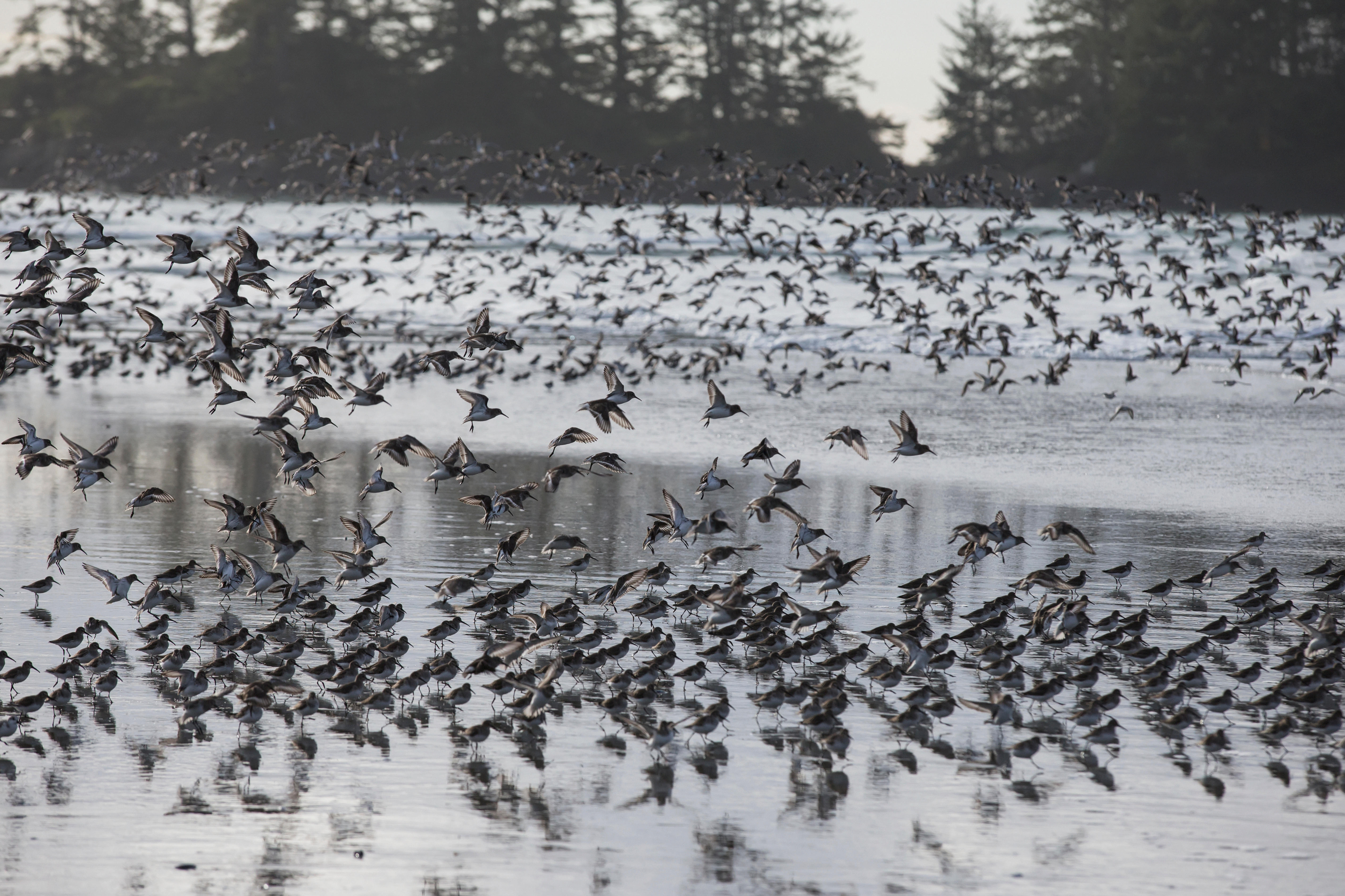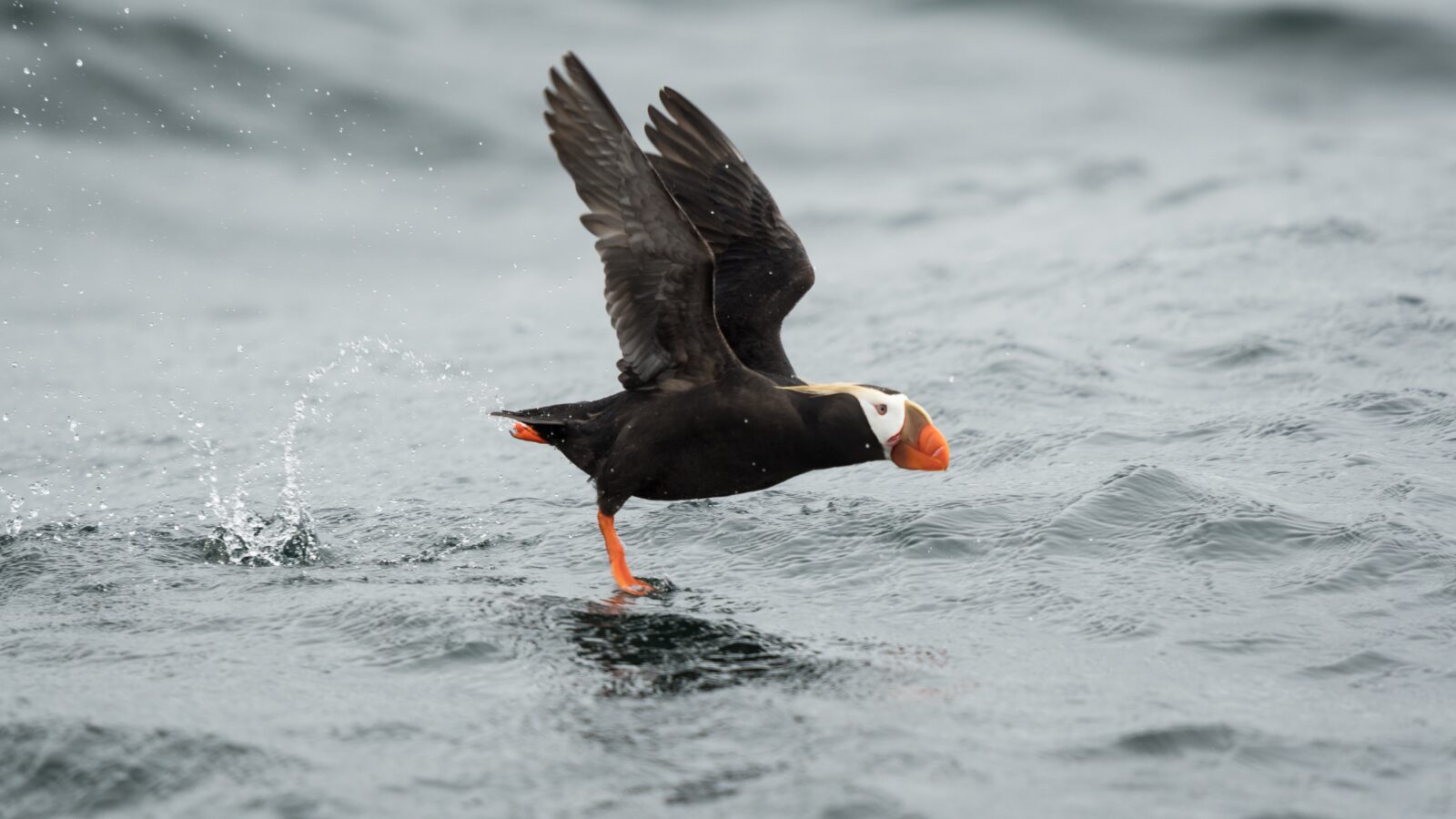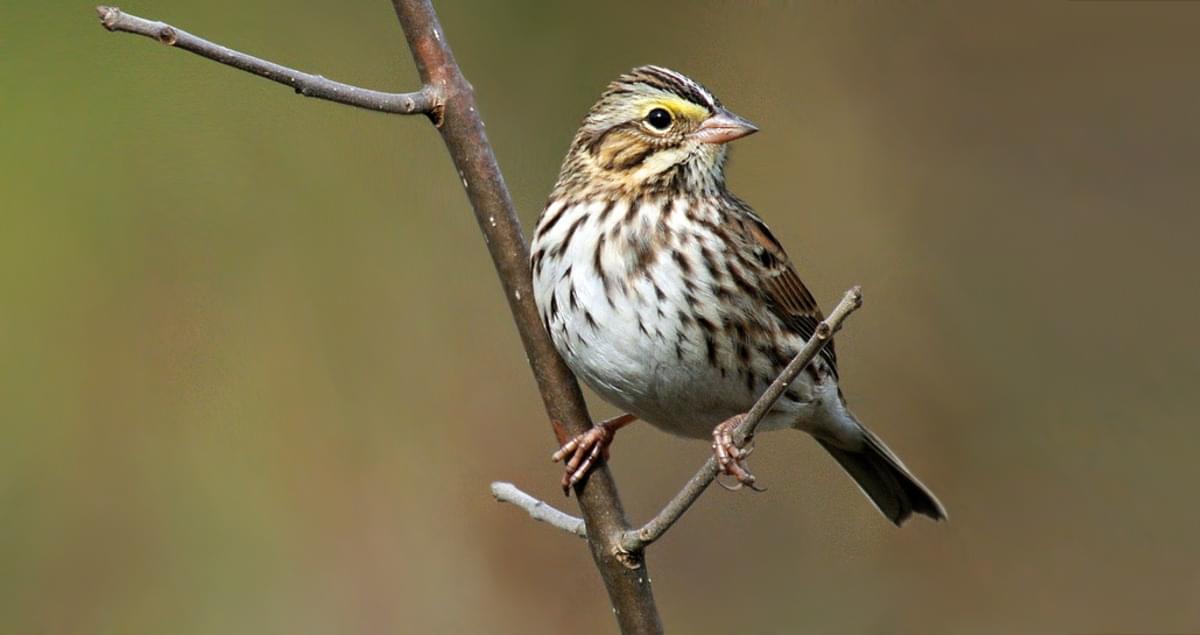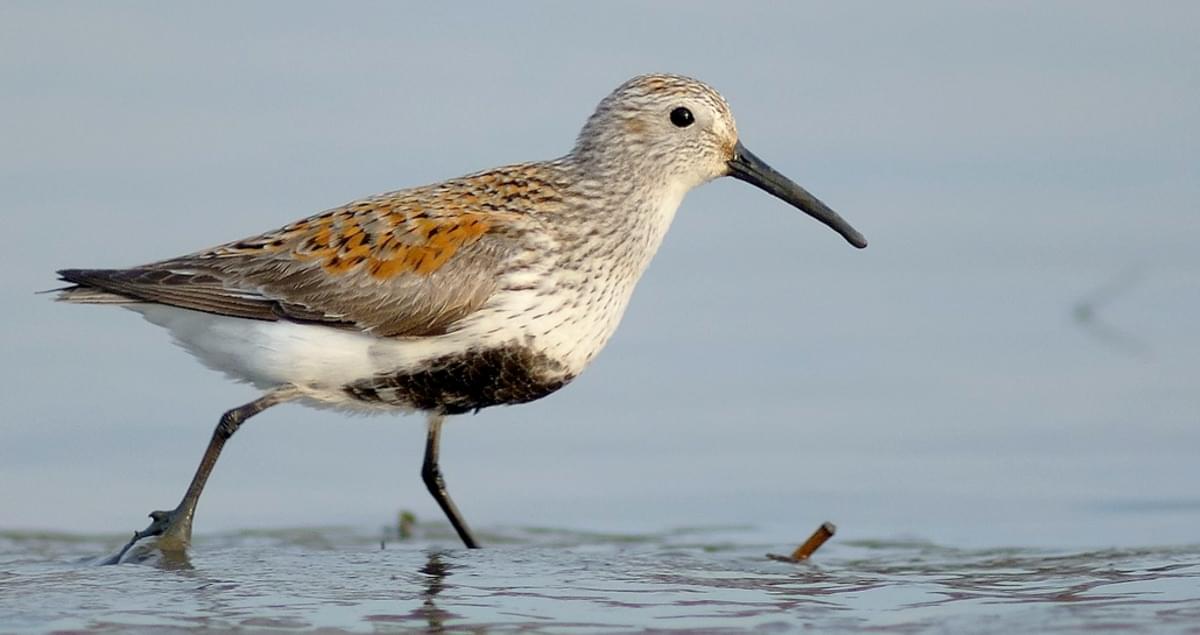LONG BEACH
NATURE JOURNAL
HOME > LONG BEACH NATURE JOURNAL > BIRDWATCHING IN TOFINO
Birdwatching in Tofino
Spring
The lengthening days of spring are a very exciting time for birding the outer coast of Vancouver Island. The mudflats and protected waterways of Clayoquot Sound, a major overwintering site for ducks and other waterbirds, become a stopover site for tens of thousands of shorebirds of 24 species in April and May each year – 40 species of shorebirds have been recorded in the Tofino area. These shorebirds are using our rich mudflats as a short resting and feeding stop as they wing their way north from their wintering grounds that may be as far south as South America. Most of these shorebirds are destined for breeding grounds on the Arctic tundra, many on the north slope of Alaska. The peak of shorebird migration is the last week in April and the first two weeks in May. Some particularly good spots to watch the shorebirds on the mudflats are at the viewing platform at the end of Sharp Rd in Tofino, and at Grice Bay in Pacific Rim National Park Reserve. Both of these sites are best viewed with a spotting scope at low to medium tides, when mud is exposed for the shorebirds to feed on.

Here in Clayoquot Sound we have the largest numbers of Whimbrel on the BC coast in migration, and up to 100,000 Western Sandpipers have been recorded on the Tofino mudflats in a single day during early May – one of the true spectacles of nature. Rarer species such as Red Knots, a beautiful salmon-pink hue in their breeding plumage, are regularly seen among the large flocks. The sandy beaches of the outer coast harbour another suite of shorebirds, while offshore, Pacific Loons stream north by in the thousands. On land, colourful songbirds return to our forests from their tropical wintering grounds – it’s a great exercise in birding-by-ear to pick apart all of their songs as they sing from high in the rainforest canopy. With luck, you’ll catch a brilliant flash of yellow as a Townsend’s Warblers or Western Tanager shows itself. And in late April and early May, you’ll see many thousands of Greater White-fronted and Cackling Geese passing northwest overhead – the outer coast is a key migration corridor for them. It’s a spectacle to watch the river of birds heading north.
Summer
The long days of summer are the nesting season for resident birds. Many west coast specialties breed locally and are easy to find all summer – species like Black Oystercatcher, Varied Thrush, Marbled Murrelet, and Hutton’s Vireo. And as soon as the first week of July, fall migration is already on! The beaches and mudflats have arctic-nesting shorebirds stopping over to feed on their southbound journey, first the adults, followed by the juveniles later in summer. A seawatch with a spotting scope from the Amphitrite Point lighthouse in Ucluelet is one summer favourite – many Marbled Murrelets, Rhinoceros Auklets, Common Murres and Pigeon Guillemots are guaranteed from shore, while the occasional Cassin’s Auklet or Tufted Puffin will fly by. On some days, many thousands of Sooty Shearwaters wheel offshore, a spectacle to watch. And you’ll almost certainly see a sea otter, or a humpback or grey whale. If it’s too foggy to scope offshore, a short drive inland up the Kennedy River will take you out of the fog into the hot sun – and find some of the breeding birds found inland, including Sooty and Ruffed Grouse, Hammond’s Flycatcher, Western Tanager, Black-headed Grosbeak, Black-throated Grey Warbler, and Vaux’s Swift.


Fall
A season of change and movement, the autumn months provide some of the highest species diversity on the outer coast. From August through October, passerines are flying south in large numbers, with the alder patches harbouring warbler flocks, and the beaches full of Savannah Sparrows. The autumn is the best season for rarities – if you search through enough of these flocks of common species, you’re guaranteed to find some strays, especially here on the outer coast where windblown or off-course birds blow in off the ocean. I love going for long walks on our outer coast beaches in the autumn – you never know what rare birds you might find. Seawatching provides a steady stream of waterfowl, alcids, and gulls flying by – including the beautiful Heermann’s Gull which comes north to visit our shores from Baja California, from July through November each year. The rocky coastlines will have Wandering Tattler, Black Turnstone and Surfbird from July onwards, while the mudflats are teeming with returning shorebirds, ducks, grebes, loons and geese.
Winter
Birding is a year-round activity here – the wet coast has the highest bird diversity of Canada in the winter months, with over 100 species possible on a winter’s day here. While storms kick up huge waves on the open ocean, the inlets remain protected and calm, sheltering large flocks of waterfowl, and the mudflats have hundreds of Dunlin, Sanderling, and Black-bellied Plovers. Grice Bay and the head of Ucluelet Harbour are fantastic spots to scope these protected waters. You’ll even see species like Trumpeter Swans overwintering on the inlets here. The towns of Tofino and Ucluelet, with their diversity of ornamental shrubs and trees and feeders, turn up rare passerines every winter – a walk around the town streets can easily turn up a rare warbler, or in October and November, even a Tropical Kingbird, among the flocks of common songbirds like Golden-crowned Sparrows and Chestnut-backed Chickadees.

Interested in birding? Join a private tour with our local bird expert Ian during your visit to Tofino!
